In Africa solar energy isn’t just about lighting up the night or using a mobile phone. It now can irrigate and fertilise farms, providing a new way to help the 791 million Africans who have no electricity.
When Peter Kimani, a vegetable farmer in Ngecha, Kenya, relied only on the rain to water his maize and potatoes, the harvest was poor. Now he’s reaping bigger results from a solar-powered kit that drip-irrigates and fertilises his fields.
“This minimises losses, especially in terms of fertiliser used, which means I save a lot by giving the crops just the right amount of these essentials,” says Kimani, who used a company called SunCulture to analyse his soil and determine exactly how much water he needs. “I am now growing a greater diversity of vegetables, such as cabbages, onions, tomatoes, sweet pepper, as well as fruits.”
SunCulture can help farmers increase yields by as much as 300 per cent and cut water use by 80 per cent. The company, which designs and sells solar-powered irrigation kits, received financial backing from Energy Access Ventures Fund, an investment vehicle backed by the European Investment Bank. The EU bank invests in many other funds in Africa that help improve the lives of small farmers.
“The EIB’s engagement in Africa through this fund aims to help people and private businesses to access affordable, reliable and sustainable energy supply needed to end poverty and boost economic growth” says Sophie Jablonski, an EIB energy expert who has worked on several energy projects in sub-Saharan Africa partially supported by the EU Bank. Besides EAVF, these other projects include d.light, Off Grid Electric, PEGAfrica, PayGo Energy and InspiraFarms.
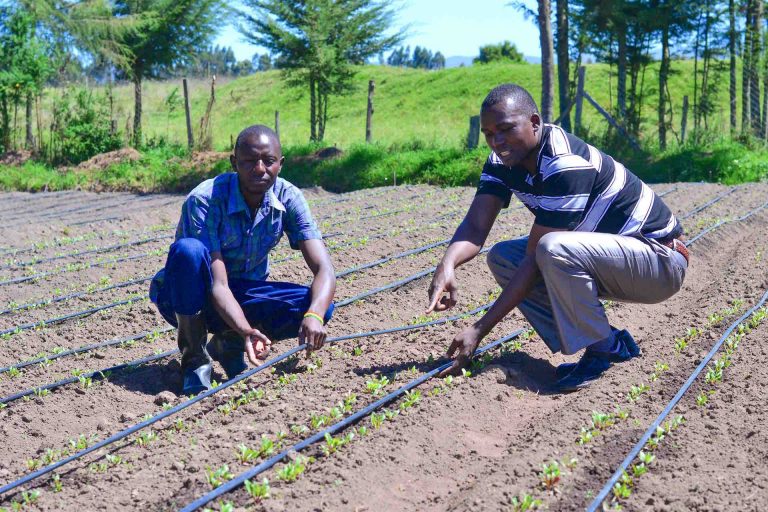
SunCulture says that 83 per cent of the 5.4 million hectares of arable land in Kenya needs irrigation and pumping technology. (copyright: SunCulture)
Africa solar energy technology means better social welfare
Fees to connect to electricity grids in Sub-Saharan Africa are among the highest in the world. As a result, only 37 percent of people in sub-Saharan Africa are on the grid. At least 50 percent of the population in 38 of the 49 sub-Saharan countries have no electricity. Most people spend up to a third of their income on polluting fuels like kerosene or on candles and batteries, and they often travel many miles simply to charge their cellphones.
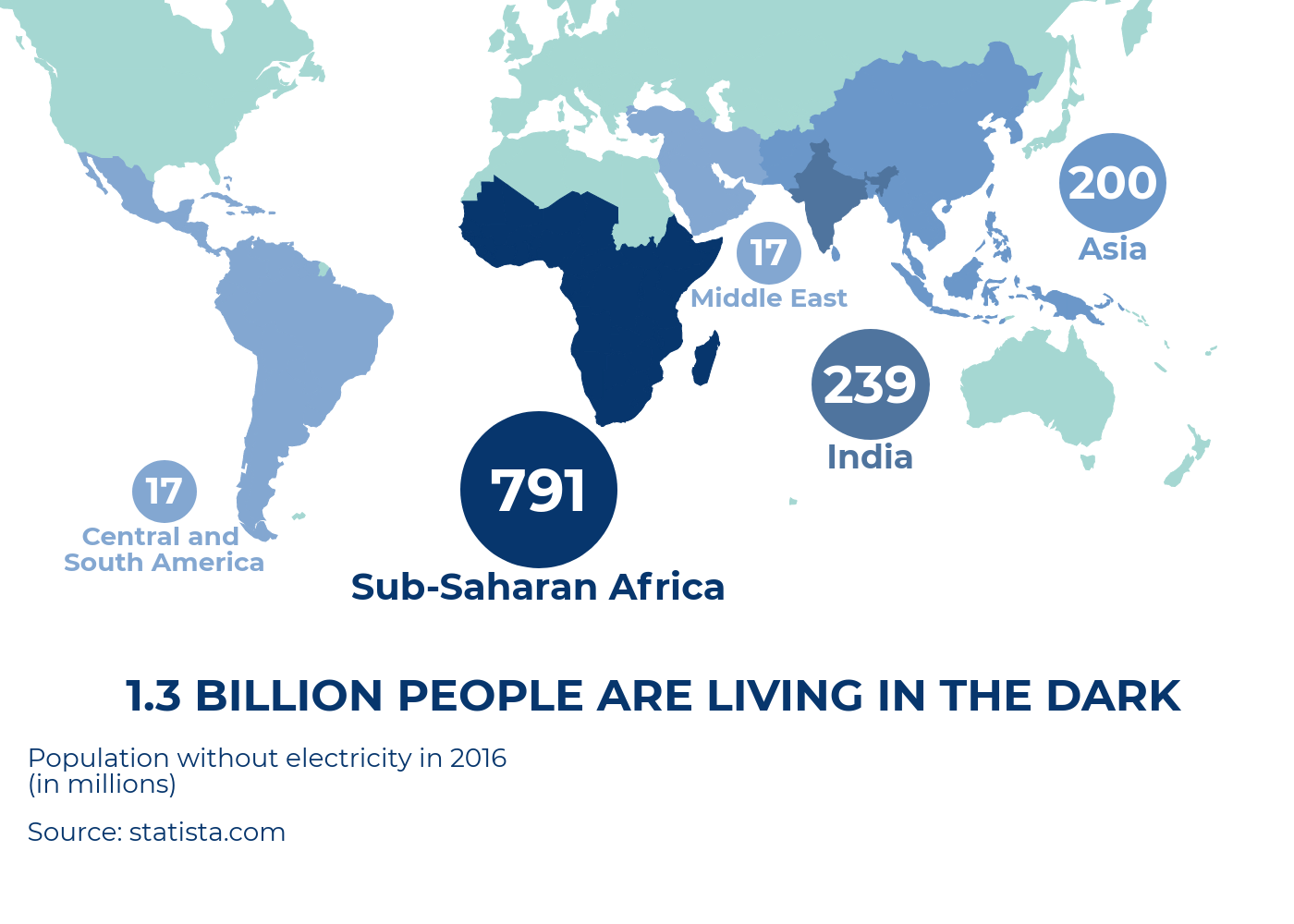
created with Piktochart
EAVF, a EUR 55 million venture capital fund in Nairobi, Kenya, invests in high-growth small and medium-sized companies that provide affordable and innovative energy solutions to underserved people in Africa, especially in rural areas. That’s the same aim for other projects EAVF has supported, like d.light, Off Grid Electric, PEGAfrica, InspiraFarms and PayGo Energy.
“Our fund focuses on a variety of business models and technologies fostering access to electricity and/or its benefits for low-income populations,” says Emmanuel Beau, EAVF’s investment manager. “We consider different energy sources (renewable and hybrid) and provide not only equity finance but also mentoring to many start-ups.”
Solar energy on 1 dollar a day
In 2016, companies that received funding from EAVF supplied around 343,000 households and 1,000 micro, small or medium-sized businesses around Sub-Saharan Africa with off-grid electricity products. Some entry-level products are affordable even for people earning as little as USD 1.90 a day.
“I am very proud to support great entrepreneurs, change daily living conditions and work to improve the energy sector in Africa,” says Beau. “The fund impacts people in so many different ways: a feeling of security at night, of belonging to a modernizing society, or improving productivity and income generating opportunities. Where kerosene lighting is replaced, the solar home system also reduces risk of fires and health damage from indoor pollution and cuts greenhouse gas emissions.”
Affordable solar energy technology
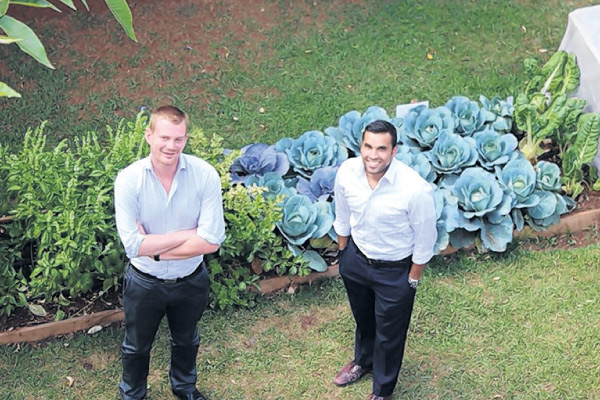
SunCulture’s founders, Charles Nichols (left) and Samir Ibrahim (copyright: SunCulture)
SunCulture, the irrigation company, also received EAVF funding. The company was created by 25-year-old Samir Ibrahim, an Indian East African who studied finance and international business at the New York University Stern School of Business, and Charles Nichols, an American who studied mechanical engineering.
Four out of five African families depend on agriculture for their livelihoods, but only four percent use irrigation. The rest rely on increasingly unreliable rainfall.
“Most smallholder farmers in Africa are only one bad harvesting season away from financial ruin,” says Ibrahim. “Solar-powered irrigation offers farmers an affordable alternative to the high cost of diesel and electric irrigation technology, enabling farmers to substantially reduce energy costs and boost agricultural output.”
Just the right amount of water
Using solar power for irrigation represents a virtuous cycle: When the sun shines, it feeds the irrigation system just when the crops need more water because of the heat.
The company plans to introduce a mobile phone app that will let farmers control the irrigation system remotely. “By use of a text message, a farmer can instruct the valves to either open or close from anywhere, which also gives the farmer freedom to run other errands,” says Nichols.
To make the kit affordable, Ibrahim and Nichols plan to partner with local financial institutions.
Direct EU support for inspiring entrepreneurs
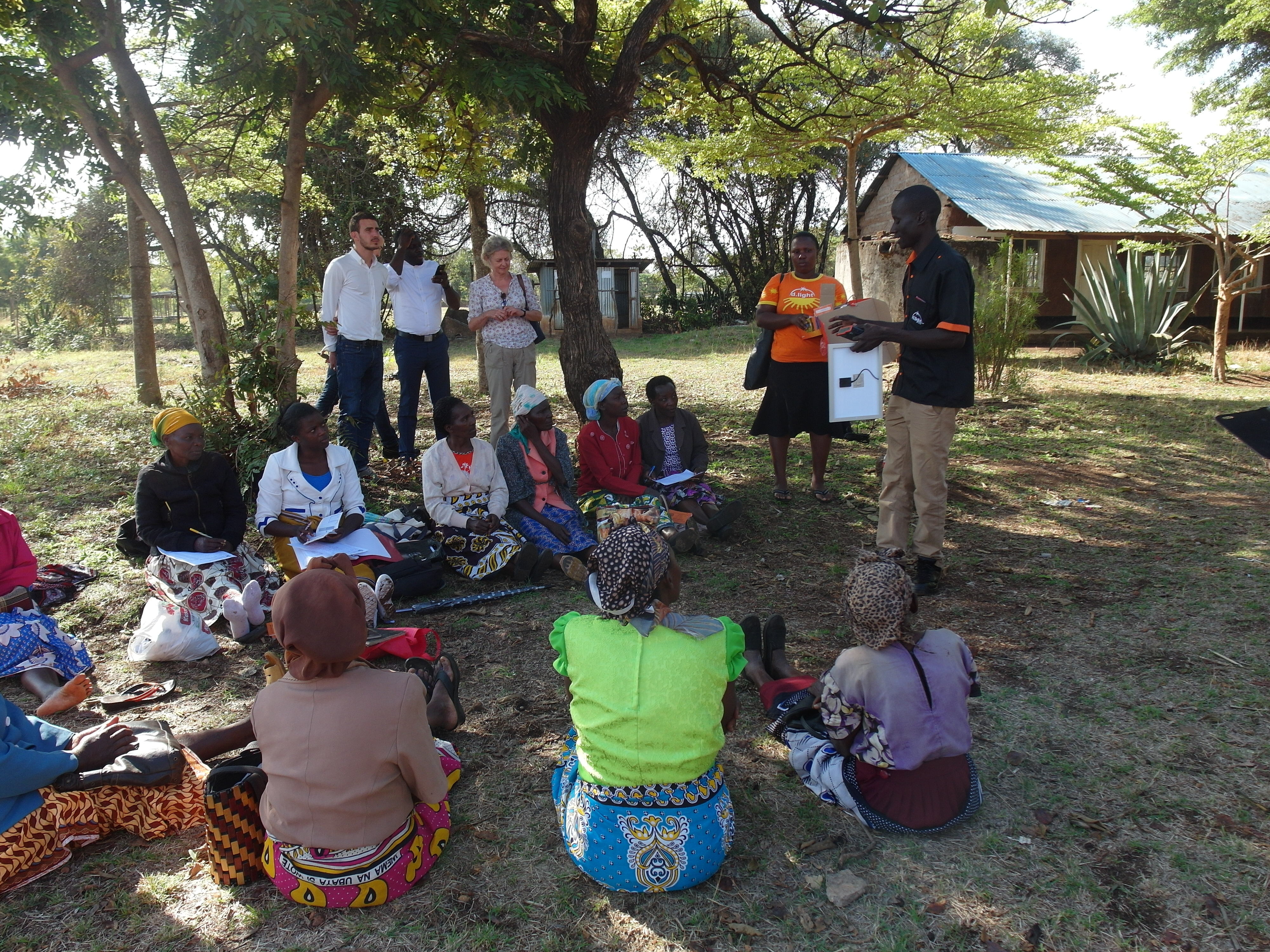
d.light representatives explaining how they can help rural villages in Africa.
d.light is another innovative start-up financed by EAVF. The company, has sold more than seventeen million solar light and power products in 62 countries.
“d.light’s solar powered lamps charge during the daytime,” says Sam Goldman, the company chief executive. “They shine for at least four hours at night and are designed to last more than five years.”
Even low-income families can afford the home solar system, because they are allowed to make mobile money payments over an extended period of time.
Affordable energy for those who need it most
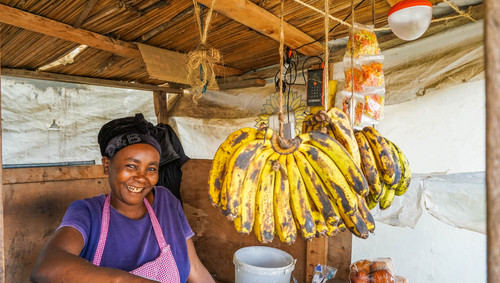
Thanks to a solar home system that allowed her to work at night, daily sales at Margaret Muchina’s food kiosk have risen 30% (copyright: d.light)
In her grocery kiosk, Margaret Muchina used to sell food only until dusk, because it then became too dark to operate. This changed in November 2016, when she received a D30 home solar system sold by d.light. The D30 is ideal as a reliable home lighting system, but it also has a higher capacity and is portable.
“Now that I have d.light’s D30, I sell for two and half hours more than I did before,” says Margaret.
Her daily sales have risen 30%. “Most of my customers now find me in the evening,” she says. “And there are many of them. I also no longer use my phone to light the shop. Nor do I use it on my way home.”
When walking home, Margaret uses a torch that comes with the D30 as her portable source of light.
